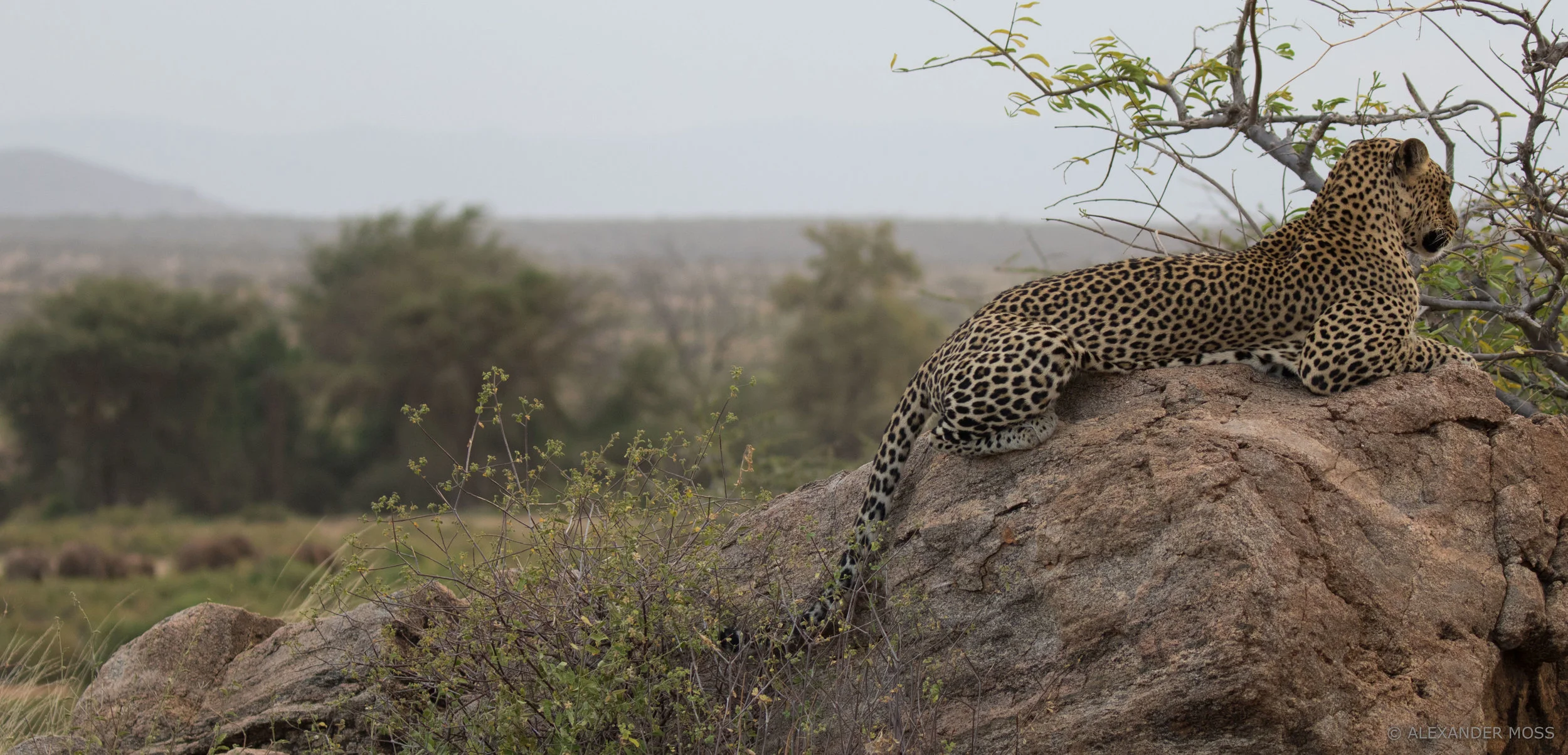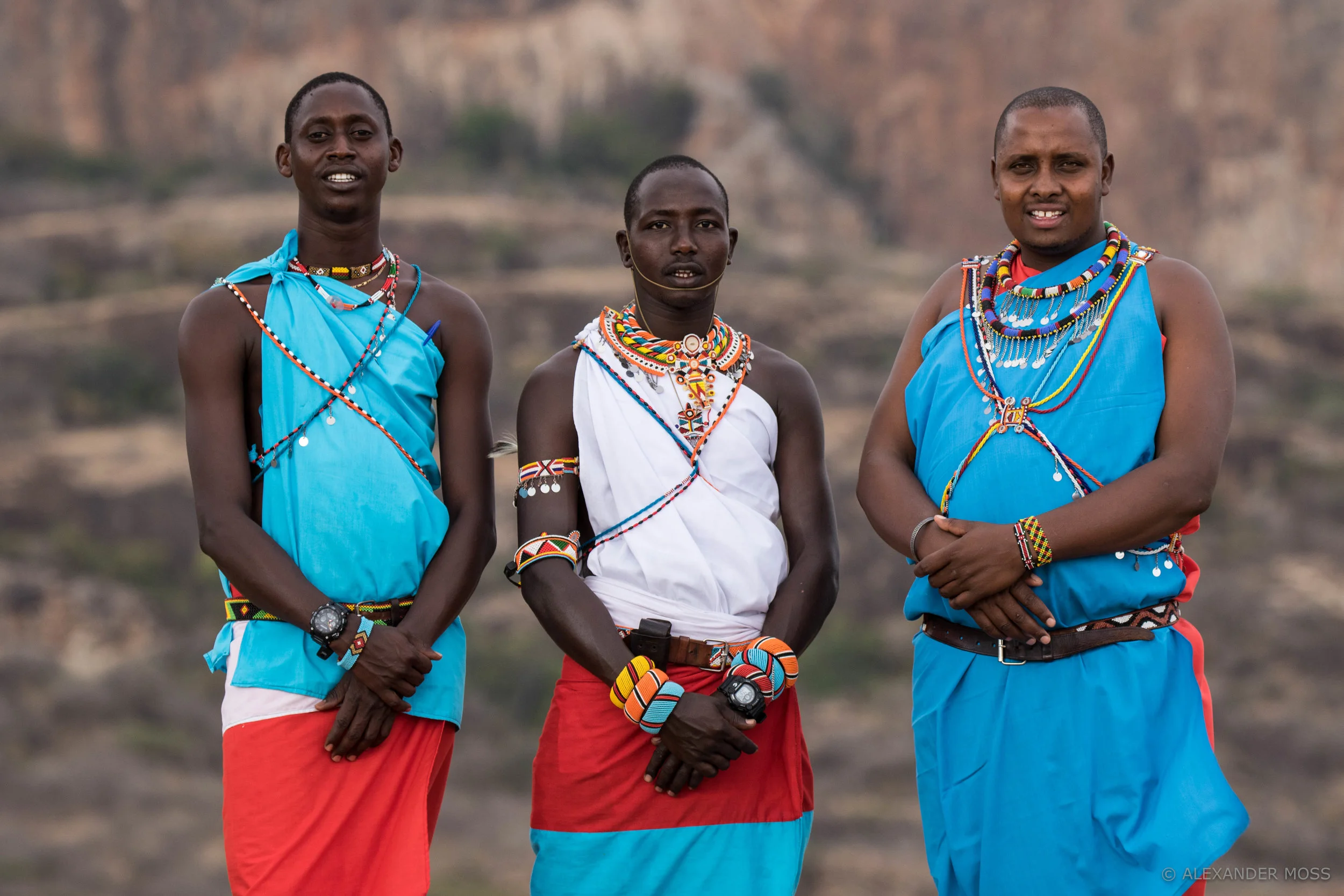The second destination in this trip to Kenya was Samburu County, about 350km north of Nairobi. Here, the altitude drops from the 1800 metres of Nairobi to just half of that, meaning that the temperature rises and the air clears, but for one distinct micro-weather system that revolves around Mount Kenya (the Kenyan answer to Kilimanjaro) en route to Samburu. We were staying within the Samburu National Reserve, a small national park at just 165 sq km. Despite this, the abundance and diversity of game was striking, including both carnivores and big herbivores. The area lacks fencing which allows the wandering elephant, for example, to cross the river at ease and migrate in a more natural way. The dryness of the region though means that most animals must return to the river at least daily.
One night was spent at Elephant Bedroom Camp, appropriately named given the number of elephant in camp during our stay. It made for an interesting and spontaneous 24 hours, not knowing what lay behind each tree. It was perhaps the most reasonably priced camp I had stayed at in Kenya (and elsewhere), with fantastic guiding from Julius, and a fine range of food and drink. You may hardly think that the food and drink should matter in the bush, but it's amazing what an appetite you can build up (despite spending most of the day laying in the back of a Landcruiser or by the pool).
The similarity between Samburu and southern Botswana is striking - both characterised by a dry, sandy landscape with an abundance of shrubbery comprising various species of thorntree. Were it not for the trees and the oddly built gerenuk, one could be forgiven for mistaking our whereabouts. Overlooking such a group of trees was perhaps the highlight of the whole trip - a female leopard sitting anxiously atop a rocky knoll, calling for her cubs. We sat and watched for almost 20 minutes, which was truly a unique (and incredibly lucky) experience.
The region is also home to ‘Special Five’ comprising the species/sub-species being Grévy’s zebra, gerenuk, Somali ostrich, reticulated giraffe and beisa oryx (gemsbok). The gerenuk is perhaps the most bizarre, looking like an impala with stretched neck and ears. Unlike most antelope, they rear back onto their hindlegs in order to reach the higher leaves. The vulturine guinea fowl is also endemic, being a beautiful and striking bird particularly compared to its southern cousins.
The county is also home to the Samburu people, a tribal group that is related to, and yet distinct from, the Maasai who originate from southern Kenya and Tanzania. The Maa language used is similar though as is their excellent guiding ability!






